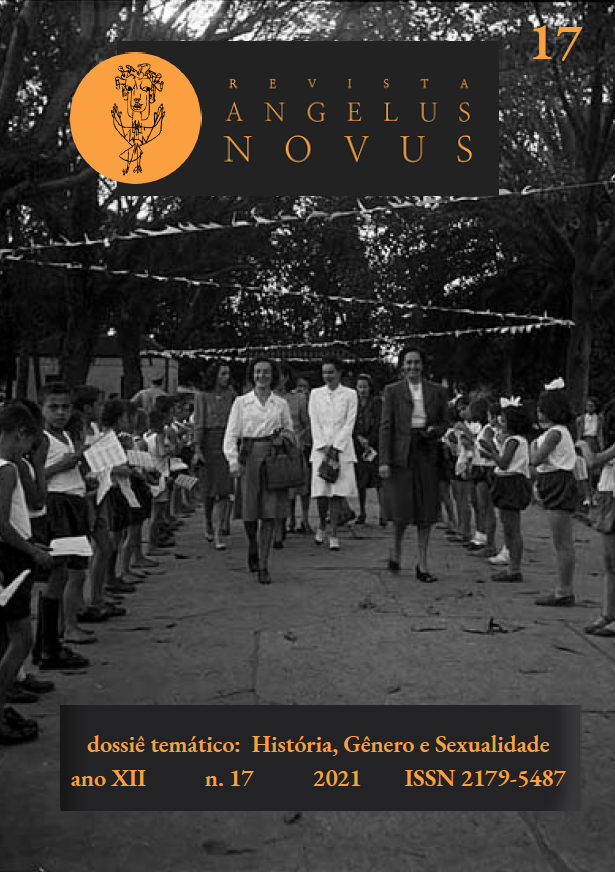The Limits of Femininity in Vergil’s Aeneid
DOI:
https://doi.org/10.11606/issn.2179-5487.v12i17p188492Keywords:
Aeneid, Women in Antiquity, Latin Literature, Roman IdentityAbstract
This work seeks to verify and unfold the thesis that the female characters of the Aeneid who go beyond the desirable limits for the prototype of an ideal Roman end up ill-fated. Therefore, in a first moment, it recovers in the Vergilian text the characterization of Cassandra, Pentesileia, Creusa, Andromache, Dido, Sibila, Camilla, Lavinia, Amata, Juturna, Juno, Venus and Deiopeia. Then, it analyzes, from the characterization made, if these characters: fit the expected prototype; they assume virtues reserved only for men; have addictions typically attributed to women; and end up ill-fated or not. The main conclusions indicate that: (1) the female characters in the Aeneid can have a bad fate both for exceeding the limits of femininity and invading the dominions of men and because of vices typically attributed to women; (2) invariably, the portrait of all female characters has vices typically attributed to women, which indicates that women, in the ancient ideology represented by the Aeneid, are essentially vicious or problematic; (3) the main divine characters resemble the Roman aristocrats, that is, the goddesses act as aristocrats acted in the view of men: they are futile, vain and avaricious and govern behind the scenes, on the basis of sexual currency, intrigues, machinery and blackmail.
Downloads
References
ADICHIE, C. N. Sejamos todos feministas. São Paulo: Companhia das Letras, 2015.
FANTHAM, E.; FOLEY, H. P.; KAMPEN, N. B.; POMEROY, S. B.; SHAPIRO, H. A. Women in the Classical World. New York: Oxford University Press, 1994.
GILL, C. “The School in the Roman Imperial Period”. INWOOD, B. (Org.). The Cambridge Companion to the Stoics. Cambridge: Cambridge University Press, 2003.
HEMELRIJK, E. “Women’s Daily Life in the Roman West”. BUDIN, S. L.; TURFA, J. M. (Org.). Women in Antiquity: Real Women Across the Ancient World. London: Taylor & Francis, 2016.
LEFKOWITZ, M. R.; FANT, M. B. Women’s Life in Greece and Rome. London: Duckworth, 1982.
REILLY, C. “Women in the Aeneid. Foreign, Female, and a Threat to Traditional Roman Society or Examples of Model Male Citizens?” JCU Senior Honors Projects, v. 60, 2015.
TOLL, K. “Making Roman-Ness and the ‘Aeneid’”. Classical Antiquity, v. 16, n. 1, p. 34-56, 1997.
VERGIL. Aeneid. Boston: Ginn & Co., 1900.
VERGILIUS. Aeneis.
VIRGÍLIO. Eneida. São Paulo: Editora 34, 2016.
Downloads
Published
Issue
Section
License
Copyright (c) 2021 Maria Helena Felicio Adriano, Luiz Henrique Milani Queriquelli

This work is licensed under a Creative Commons Attribution-NonCommercial 4.0 International License.
1. Proposta de Política para Periódicos de Acesso Livre
Autores que publicam nesta revista concordam com os seguintes termos:
- Autores mantém os direitos autorais e concedem à revista o direito de primeira publicação, com o trabalho simultaneamente licenciado sob a Creative Commons Attribution License que permitindo o compartilhamento do trabalho com reconhecimento da autoria do trabalho e publicação inicial nesta revista.
- Autores têm autorização para assumir contratos adicionais separadamente, para distribuição não-exclusiva da versão do trabalho publicada nesta revista (ex.: publicar em repositório institucional ou como capítulo de livro), com reconhecimento de autoria e publicação inicial nesta revista.
- Autores têm permissão e são estimulados a publicar e distribuir seu trabalho online (ex.: em repositórios institucionais ou na sua página pessoal) a qualquer ponto antes ou durante o processo editorial, já que isso pode gerar alterações produtivas, bem como aumentar o impacto e a citação do trabalho publicado (Veja O Efeito do Acesso Livre).






